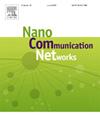通过深度学习实现图像重建,用于皮肤癌早期检测的可调谐太赫兹感应
IF 4.7
4区 计算机科学
Q2 ENGINEERING, ELECTRICAL & ELECTRONIC
引用次数: 0
摘要
本研究报告了基于深度学习模型的图像重建健康细胞和癌细胞通过部署超材料吸收剂。提出了两种不同的可调谐吸收器。在吸收剂I中,通过改变充当开关的石墨烯条的化学势来引入可调性,而在吸收剂II中,通过在开槽银片中嵌入多个石墨烯片来促进可调性。提出了等效电路模型(ECM),利用集总参数来模拟吸收器中不同组分之间的电磁耦合,从而分析其反射特性。这项研究对于理解吸收器几何形状对确定峰值吸收和反射零值对应的共振频率的影响至关重要。表面电流分布有助于确定在吸收器中是否形成了电或磁共振。可调谐吸收器的最大灵敏度达到435 GHz/RIU。最大品质因子为319,最佳品质系数(FOM)为11。所提出的吸收剂可用于检测人体皮肤的癌细胞,当后者作为分析物放置在其上。当将吸收剂放置在人体皮肤附近时,根据其反射特性重建了健康细胞和癌细胞的不同二维图像,这确保了它可以用作生物传感器,用于在早期阶段对皮肤癌进行非侵入性检测。从反射光谱角度对卷积神经网络(CNN)成像算法进行了细致的分析。该模型准确率为94.3%,灵敏度为92.7%,特异性为95.8%,F1评分为93.2%。本文章由计算机程序翻译,如有差异,请以英文原文为准。
Tunable THz sensing for early detection of skin cancer by deep learning enabled image reconstruction
This research reports deep learning model-based image reconstruction of healthy cells and cancerous cells by deployment of metamaterial absorbers. Two different tunable absorbers have been proposed. In absorber I, tunability is introduced by varying the chemical potential of graphene strips which act as switches while in absorber II, tunability is facilitated by using multiple graphene patches embedded in slotted silver patches. Equivalent circuit models (ECM) have been proposed for modelling the electromagnetic coupling between different constituents in the absorbers by lumped parameters for analysing the reflection characteristics. This study is vital for comprehending the effect of the absorber geometry in determining the resonant frequencies corresponding to peak absorption and reflection nulls. The surface current distribution aids in determining whether electric or magnetic resonances are formed in the absorber. The tunable absorbers achieved a maximum sensitivity of 435 GHz/RIU. Maximum quality factor of 319 and figure of merit (FOM) of 11 have been obtained. The proposed absorbers can be used in detecting cancerous cells of human skin when the latter is placed as an analyte over it. Distinct 2D images of healthy and cancerous cells have been reconstructed from the reflection characteristics of the absorber when placed in vicinity of human skin which ensures that it can be used as a biosensor for non-invasive detection of skin cancer at an early stage. A meticulous analysis of convolutional neural network (CNN) enabled imaging algorithm from the reflectance spectrum has been elucidated. The model achieved 94.3% accuracy, 92.7% sensitivity, 95.8% specificity, and an F1 score of 93.2%.
求助全文
通过发布文献求助,成功后即可免费获取论文全文。
去求助
来源期刊

Nano Communication Networks
Mathematics-Applied Mathematics
CiteScore
6.00
自引率
6.90%
发文量
14
期刊介绍:
The Nano Communication Networks Journal is an international, archival and multi-disciplinary journal providing a publication vehicle for complete coverage of all topics of interest to those involved in all aspects of nanoscale communication and networking. Theoretical research contributions presenting new techniques, concepts or analyses; applied contributions reporting on experiences and experiments; and tutorial and survey manuscripts are published.
Nano Communication Networks is a part of the COMNET (Computer Networks) family of journals within Elsevier. The family of journals covers all aspects of networking except nanonetworking, which is the scope of this journal.
 求助内容:
求助内容: 应助结果提醒方式:
应助结果提醒方式:


